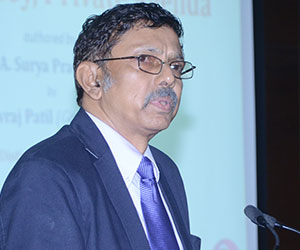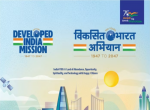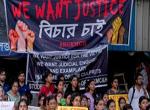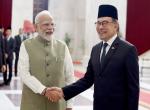Thinking out-of-the-box, politicians and bureaucrats are coming up with innovative ideas in many states to effectively tackle problems that have dogged Indian society for decades. It is indeed heartening to see the range of programmes and the clever manner in which each programme is tweaked to suit the needs of a specific state.
Apart from emergency health care and health insurance for the poor, areas in which states like Gujarat and Andhra Pradesh have taken big strides, there are several other sectors in which states have done remarkably well. To the pleasant surprise of many, the much neglected social sector is suddenly attracting the attention of the bureaucracy, primarily because of the special emphasis that the political leadership has begun to put on this sector. Consequently, several schemes aimed at universalisation of primary education (including the laudable mid-day meal scheme), promotion of education among girls, better maternity health care and pensions from poor senior citizens and others in need have been implemented with remarkable success in several states.
So, while the media, steeped in ignorance, whines about non-governance and “anti-incumbency”, the truth is that probably for the first time after independence, governments are able to deliver schemes to the millions of beneficiaries in the villages and people are not complaining. Equally extraordinary is the achievement of governments like in Gujarat in areas like rural electrification and states like Karnataka in the area of primary education. These states and many more need to be complimented for the efficient delivery of the mid-day meal scheme which ensures one nutritious meal for 150 million children across the country.
The spectacular success of emergency health care via the 108 service, which has been planned and executed by the Emergency Management and Research Institute in many states, has been discussed in Part I of this series. This programme is working wonders in bringing down infant and maternal mortality rates in the states where these ambulances are available on call in all villages. This programme also has crucial linkages to health insurance schemes like Arogyasri in Andhra Pradesh and Yashasvini in Karnataka.
Several social sector schemes that have begun to have an impact have been conceived at the state level and later adopted at the federal level and offered across the country either in a fully subsidised form or on a cost-sharing basis. The Janani Suraksha Yojana (JSY) is a prime example. It offers incentives to pregnant women who shun the age-old practice in rural India of delivering babies at home and instead go to an established medical facility for the purpose. It was first introduced in September, 2005 in Madhya Pradesh as `Prasav Hetu Parivahan Evam Upchaar Yojana’. The Union Government appropriated it, re-christened it JSY and offered it to all states.
Narendra Modi, Y.S.Rajashekara Reddy, S.M.Krishna, Shivraj Singh Chouhan and Yeddyurappa are some names that immediately come to mind when we think of politicians who have had their thinking caps on while heading governments. These are persons in our public life who have come up with innovative ideas that have caught the imagination of unbiased politicians and bureaucrats at the Centre and in the states. Thus, while Jyotigram is Narendra Modi’s idea to provide 24X 7 electricity to every home in Gujarat’s 18080 villages, Shivraj Singh Chouhan’s `Ladli Lakshmi’ Scheme is aimed at correcting the adverse sex ratio in Madhya Pradesh. Under this scheme, the girl child gets a fixed deposit certificate that can be enchased for Rs 1.18 lakh when she attains 21 or at the time of her marriage. The girl child registered under this scheme also gets scholarships from the fifth to the twelfth standard.
S.M.Krishna came up with `Yashasvini’ – a low-cost, affordable health insurance cover for farmers and their families. Yashasvini has been a roaring success across rural Karnataka and people in many villages remember Mr.Krishna for coming up with this great idea to enable the poor to go to the best of hospitals for treatment of major ailments. Krishna is also remembered for `Akshara Dasoha’ – the mid-day meal scheme for primary school children. This has also been implemented very effectively in the state. Mr.B.S.Yeddyurappa, the present Chief Minister, has fortunately continued with these schemes and implemented them with renewed vigour. The mid-day meal scheme, for example, has since been extended to children in higher classes. Yeddyurappa also gets credit for coming up with a clever device to bring down the drop-out rate among school-going girls at the high school entry level. As Karnataka’s Finance Minister in Chief Minister H.D.Kuramaswamy’s government, he came up with the novel idea of providing a bicycle free of cost to every girl child from a BPL (Below Poverty Line) family who took admission in a government high school. This simple idea has had a positive effect on high school admissions in the state. In recent times, the government has extended this scheme to boys hailing from BPL families.
Mr.Rajashekara Reddy gets the credit for grabbing the `108’ Ambulance idea formulated by a not-for-profit organization called Emergency Management and Research Institute (EMRI) and implementing it in 2005. The emergency medical care facility became such a runaway success that Narendra Modi got his health department to implement the same in Gujarat in record time. Since then many other states including Uttarakhand, Goa and Meghalaya have fully implemented this programme and ensured that emergency medical help is available across their states in 15 -20 minutes. Many other states have since signed MOU’s with EMRI and they include Assam, Karnataka, Rajasthan and Tamil Nadu.
Such is the impact of these programmes that the Bharatiya Janata Party (BJP) has incorporated many of them in its manifesto for the 2009 parliamentary election. It has said that if voted to power, it will introduce `108’ across India within a year. It has also offered to extend the bicycle scheme for high-school going girls from BPL families and the `Ladli Lakshmi’ Scheme to all states.
The Andhra Chief Minister also deserves acknowledgement for launching the `Arogyasri’ programme to provide health insurance cover to the poor. While in Karnataka the beneficiaries under `Yashasvini’ pay a nominal Rs 10 per month as premium to have the health cover, in Andhra Pradesh this facility is offered free to all BPL families.
Apart from these programmes, two other programmes that warrant national attention is the Jan Abhiyan Parishad in Madhya Pradesh and the Karnataka idea of appointing School Development and Monitoring Committees (SDMCs). The Jan Abhiyan Parishad is a kind of quasi-government agency that co-ordinates the work of non-government organizations in the state and monitors development and implementation of social sector schemes in the state. It has young district co-ordinators who are the eyes and ears of the government, keeping track of government schemes and ensuring steady and unbiased feedback. The idea is to open up track II for flow of information to the state’s headquarters through an agency that is outside the standard bureaucratic hierarchy. The Parishad also co-ordinates and aggregates the work of NGOs so as to maximize the results of these organizations at the grass roots.
The SDMCs in Karnataka comprise of parents. Every government school has such a committee to oversee the utilization of school funds, the mid-day meal programme and other schemes meant to benefit children. The Head Master is the Secretary of the committee. It is by and large conceded that the existence of these committees has improved the quality of education in the schools, the quality of the mid-day meals and the attendance of teachers.
Here is a brief account of some of the other notable schemes, which is not only creating a buzz in the states where they are implemented but all over the country:
Janani Suraksha Yojana
As stated earlier, JSY is a take off on a similar scheme that was first introduced in the year 2005 in Madhya Pradesh. Soon the union government realized that it made sense to incentivise institutionalized deliveries of babies in order to bring down the Infant Mortality Rate (IMR) and the Maternal Mortality RATE (MMR). There are different versions of this schemes in different states. The state of Madhya Pradesh gives a cash incentive of Rs 1400. Karnataka offers a cash incentive of Rs 500-700 and a kit for the baby. Karnataka’s Health Secretary Mr.N.Madan Gopal says the state also has a clutch of other schemes to improve the health of women and children. Apart from the cash incentive under JSY, pregnant women are given Rs 2000 in two instalments during their pregnancy to enable them to add more nutrition to their diet. The kit for the baby comprises of baby clothes, a blanket, a mosquito net and toiletries – all costing over Rs 1300. Mr.Madan Gopal says that in addition, the state gives incentives to private accredited hospitals which admit women from BPL families for deliveries. The state has also launched 1000 Primary Health Centres which work 24X7. The state is also focused on the health of school children and has launched the Karnataka Suvarna Arogya Chaitanya to ensure yearly medical check-up of all school-goers. Thus far, Mr.Madan Gopal says over 8 million children have been medically examined. Of them 1.2 million children have been treated for minor ailments locally and 9747 have been provided tertiary care including super-speciality treatment. JSY is called `Tayi Bhagya’ in this state. Meena Bawaria, Anganwadi Worker, Chandla village, Hoshangabad District, says that while the cash incentive (Rs 1400 ) provided by the Madhya Pradesh government is a major draw, women prefer to reach the civil hospital in time for deliveries because of the better medical facility available there. Ramkali Bhai of Bhiapur village in Bhimbetka Block, Madhya Pradesh, says women in her village prefer to get to the civil hospital in time for their deliveries. In the last 12 months, no baby has been delivered in a village home she says. She says JSY is not just about a cash incentive. It is also about better pre and post-natal care.
Ladli Lakshmi’ fights Adverse Sex Ratio
The `Ladli Lakshmi’ Scheme devised by the Madhya Pradesh government to tackle the problem of adverse sex ratio is a unique programme which is being adopted with local variations in some other states which are faced with a similar problem. The average sex ratio in Madhya Pradesh is 927 which means 927 females: 1000 males. This is not a happy situation but what is worse is that it is less than 900 in four districts. In Morena District it is an abysmal 827. The state government seeks to reverse this trend by offering a cash incentive to the girl child. Every woman who undergoes sterilization after the second child can register the girl child, if she has one, under this scheme. The government issues a National Savings Certificate for Rs 6000 every year for 5 years to every registered girl child. This can be enchased for Rs 1.18 lakh when the girl attains the age of 21. Until then, she gets annual scholarships ranging from Rs 2000 – 7500 from the fifth to the twelfth standard. If a woman has two daughters, both the daughters are registered under this scheme provided she is sterilized after the second child. This programme was launched by the state in 2007-08.
This scheme has been lauded by the people of the state and has been giving the chief minister considerable electoral dividends. There are now many `Ladli Lakshmis’ in the villages of Madhya Paradesh. Ram Kali of Hasau Village in Vidisha District says that her grand daughter has been registered as a `Ladli Lakshmi’. This is a very good scheme and is meant to encourage the girl child, she says. . Usha Tewari, Anganwadi Worker in Babai Block, Hoshangabad District says two girls in Chandla Village have been registered as Ladli Lakshmis after their mothers underwent sterilization. She says a few other girls in this village have not been registered because their mothers do not have the sterilization certificate.
According to Mr.Anurag Jain, Secretary to the Chief Minister, Ladli Lakshmi has already begun to improve the sex ratio. It has also had an impact on the family welfare programme. The number of sterilizations has gone up from 3.75 lakh to 4.50 lakh per annum in the state. But Ladli Lakshmi is just one of the many girl child and women oriented schemes introduced by the state government. Another scheme that has caught the imagination of the people is the Mukhyamantri Kanyadaan Yojana launched in April, 2007. This is meant to ease the financial burden that parents have to bear while conducting the marriages of their daughters. The state gives a grant of Rs 8500 per marriage. This is used as seed money by a community welfare association or a caste-related association to organize mass marriages.
Mr.Jain says that ever since Madhya Pradesh launched the programme to encourage women to opt for institutionalized delivery of babies in 2005, there has been steady decline in the Infant Mortality Rate (IMR) and Maternal Mortality Rate (MMR) and the percentage of intiutionalised deliveries has shot up from 26 per cent to 70 per cent in 4 years. This state offers the highest cash incentive (Rs 1400) for women who delivery babies in the primary health centres or civil hospitals. This state also provides free text books and uniforms to all children studying in government schools.
A scheme similar to this one runs under the name `Bhagya Lakshmi’ in Karnataka and is also very popular among the people. S.C.Sudha, President of the Gopalapura Gram Panchayat in Mandya District, Karnataka says women are happy with this scheme because of the status it gives the girl child.
Jyotigram – Light at the End of the Tunnel
The people of Gujarat see the Jyotigram Scheme to be a real boon. They say that 24 X 7 electricity has put them on par with the developed parts of India and taken away many of the problems that come with inadequate power supply. Govindbhai Gopalbhai of Bagaria Village in Narmada District describes Jyotirgram as an excellent scheme. “It is a god send, specially for our children. They now study for long hours after dusk. I just cannot tell you what it has done for children’s education” he says. Usually, a village home consumes about 50 -70 units per month. The cost per unit is Rs 4.50 and every household spends around Rs 200-250 per month towards electricity. “Another advantage of guaranteed power supply is that it enables us to organize social, cultural and religious programmes in our village. This has improved community life” says Gopalbhai.
Ms.Poornima Akshay of Garudeshwar Village in Rajpipla Taluk says Jyotirgram has meant a lot to people in rural Gujarat. “We are no longer worried about power cuts and about our children’s education. Children now study for long hours without any hassle. I have no tensions on this score any more” she says. The other big advantage of Jyotirgram is that it is a great help of all women who have some kind of cottage industry to augment family income. Women who work sewing machines which run on electric power and women who have grinding machines are now very productive and happy. “I do not know the cost of power per unit but I feel that the electricity charges ought to be lower” says Ms.Akshay. Ashwin Patel of Amjagaon in Gandhinagar District echoes this sentiment.
He says “We get uninterrupted 3-phase power in our village. It has done wonders for our children’s education. The government also ensures 8-hour power supply for our fields. The timings however change every week. We wish we had fixed time slots for every village. However, the 8-hour supply is provided without any hassles. I wonder if the cost per unit can be reduced for small land holders?”
The Bicycle - A Revolution on Two Wheels
The bicycle for the girl child is a revolutionary idea indeed, because of its popularity, usefulness and social content. This is evident in all states that picked up the idea from Karnataka and this includes states in different regions of the country like Gujarat and Madhya Pradesh. Here are some responses of rural folk from these states to the bicycle idea. Dr.Balasubramaniam, President of the Swami Vivekananda Youth Movement, which is doing path-breaking work in the area of education and health care among the tribals living in the Heggadadevanakote area near Mysore City says the bicycle has made a big difference because it has made the school accessible for girls in the villages. “The bicycle has made made school-going a daily event to look forward to. It has brought about gender equality, given the girls mobility and enormous sense of self-confidence” he says. Lalitha Lokesh, President of Dyavamma Stree Shakti Self-Help Group says the cycle for the girl child is a revolutionary idea that has given mobility and self confidence to young women. Anita of Hosanagara village in Hassan District, who studies in the local high school says that she got her bicycle last week and it has meant greater mobility for her. Several elders in this village said the bicycle scheme and the free school uniforms and text books given to students in all government schools in the state are big steps towards creating a level playing field for all school-going children. There are similar reactions from rural folk in other states. Everybody is excited about the bicycle idea.
Ms.Kokilabhen of Dabhoi Village in Rajpipla Taluk says the gift of a bicycle to every girl in a B P L family who enters Class V I I is a great idea. “It has given girls in our village mobility. It is also an incentive for them to continue school education and for the parents to send them to middle and high school. Girls in our village from poor families are now going to be better educated. These girls now travel 5-7 kilometres to go to school or a computer class. There is no corruption or bribery in the cycle scheme. At least I have not heard of it. It is a pleasure to see dozens of girls from our village cycling their way to school every morning” she says. Girls from BPL families also get a scholarships to continue education after Class VI. The girl child is also entitled to free travel in state transport buses. This is yet another device to coax parents to send their daughters to school.
Both Vinita Malvi and Shobha Kashwai of Kharwai village in Vidisha District, Madhya Pradesh have been given bicycles by the state government after their admission to the high school. Since the high school is in Hasau village, which is 4 kilometres away, the bicycle is the key to the continuance of their education, they say. Rekha Dange of the same village said she would be getting her bicycle very soon. But, as Niti Borasi and her sister Sapna of Hasau village point out, in Madhya Pradesh girls are are not entitled to the bicycle if the high school is located in their village. This is different from Karnataka where all students get a bicycle on entering a government high school, irrespective of the location of the school. Rekha of Bhiapur village in Bhimbetka Block in this state says the day she joined high school, the teacher put her name up for the bicycle scheme and she got her bicycle a short while later.
Old Age Pension – Ageing With Dignity
One of the simplest tests that one can apply to check the quality of governance is to ascertain from poor, elderly village folk as to whether they are getting the old age pension which they are entitled to. This may seem hyperbolic but I could not find disappointed or disgruntled beneficiaries in three districts of North Costal Andhra Pradesh that I visited in February, 2009. In every village, elderly man and woman who are entitled to this meager pension said they were getting it. Often, they said the pension was delivered at their door by the village accountant on the first of every month. They said they did not have to cringe before government officials to get the pension every month. Nor did they have to stand in long queues. The pension delivery scheme worked like clock-work they said. The pensions for widows and physically handicapped persons were also delivered with similar efficiency, they said. K.Somalamma, (70) of Srikakulam District said she got an old age pension rs 200. She received it from the Panchayat Secretary at the Panchayat Office every month. K. Chandrakala, who gets widow pension of Rs 200 and Vasant rani (20) who gets a pension of Rs 500 provided for handicapped citizens said they had no problems in receiving the pensin every month. Poovalapatti of Biyyalavalsa Village in Kurupam Mandal, Vizianagaram District said “the Panchayat Secretary or the village revenue officer come on the first of the month and make payment of pensions to old people, the handicapped and the widows”. Sunita kumari of the same village said that her pension, given to the physically handicapped, ( Rs 500) is paid at month each month by the village officials. Sannay Naidu of Durubili Village (85) gets Rs 200 as old age pension. The scheme works efficiently and the village revenue officer delivers the money at home on the first of every month but the pension amount must be enhanced at least
Rs 500 he says. Ms.Biddikamangi, Gramaikya Sangha President says all those who are eligible get their pensions. D.Pathi, President, Biyyalavalsa Panchayat says Durubili Village has 40 pensioners receiving pensions meant for old age, widow or handicapped persons. .S.K.Goush , project coordinator, Action in Rural Technology and Services (ARTS) , an NGO working in Northern Andhra Pradesh says that with so many welfare schemes, every rural household has a beneficiary – be it the old gae pension, housing, employment guarantee or the mid-day meal. According to Mr.Ghoush, 90 per cent of the beneficiaries in tribal interior villages in the state have been identified. He says earlier Panchayat Secretaries were distributing pension and collecting a commission of Rs 5 to 10 rs from every beneficiary. Now the government proposes to eliminate this commission by giving every beneficiary a smart card and opening ATMs all over the state.
Self Help is the Best Help
Sayamma, Secretary of Sharada Mahila Sangam , Gandhinagar in North Andhra Pradesh says her group first took a loan of Rs 30,000 in 2001. and started a general store . Later, after paying off the bank, they took a fresh loan of Rs 50,000 from the same bank to trade in tamarind. They made a profit, paid off the bank and went in for a fresh loan of Rs One Lakh. This was used to trade in forest produce including cashew. Later the 15-member group became even more adventurous and went in for a loan of Rs 3 lakhs. This was used by the group to construct their houses. The monthly EMI is Rs 12,000 and is paid regularly she says. T. Easwaramma , Secretary , Laksmi Mahila Mandali and M..Savitri, President say they take bank loans to trade in forest produce, sheep etc and eventually when they made a decent profit, they took bigger loans to build their homes. Bhojamma, President, Mahila Mandal, Durubili village talks of similar initiatives by her group and says the viability of their businesses is a matter of pride for them.
In Karnataka, the self help groups are as popular as in Andhra Pradesh. This is a popular movement across the state. Lalitha Lokesh, President of the Dyavamma Stree Shakti Self –Help Group says such groups give women the opportunity to think of ways to augment family income. The cash incentive given by the state government encourages women to start such groups and begin thinking of small businesses to launch, she says. She says all members of the group have bank accounts and they have bought a tailoring machine.
Mid-Day Meal – Nutrition alongside Education
The mid-day meal scheme ensures basic nutrition for 150 million poor school children across the country. B.Satish, a Class VIII student in the Government Girijana Residential School near Kurupam town in Andhra Pradesh says the food is good and the students are well fed. Madhu Babu of the same school, which has 460 students, says the school has been a plesant experience for him over six years. Twice a month doctors from the Kurupam Hospital visit the school and attend to students who need medical care.
The school has a resident nurse who attend to minor ailments. Shashibhushan chowdhary, the Cook in this Tribal Welfare School says the menu for the week is on permanent display on the notice board. Harsh, a first standard student in a government primary school in Kharwai Village in Vidisha District of Madhya Pradesh says he gets a meal of Rajma (Beans), Rice and Dhal every day at school. “We get as much as we wish to eat” he says. His older friend Bisal, who studies in the third standard in the same school says the food is good. Jamuna Prasad of Hasau Village says the children are happy with the mid-day meal. It provides them with nutritious food, he says. Parul Upadhyay, Vidisha District Co-ordinator of the Jan Abhiyan Prishad says school children in the district are very happy with the quality of the meals provided to them in school. The response from school children in many villages in the Old Mysore Area of Karnataka is equally positive.
Finally a word about awareness. Thanks to higher literacy and the media revolution, there is greater awareness of government programmes in the villages these days. This awareness, coupled with transparency in government has meant better flow of information within communities about government schemes and programmes and about beneficiaries. Thus, the people are slowly getting empowered through information. This is apart from the information extracted as a matter of right through the Right to Information Act. In many villages in Andhra Pradesh, Karnataka and Gujarat, the people told this writer that they got information about government programmes through newspaper advertisements. This seems to establish the growing power of the print media in a society that is becoming more and more literate every year and also acquiring the purchasing power to buy daily newspapers. M.Savitri, a resident of Biyyalavalsa village in Kurupam Mandal in Andhra Pradesh says the people are largely ignorant about these schemes till a decade ago. The launch of women’s self-help groups has created the awareness and empowered us, she says. Mohan Rao of Sangedda village, Kurupam Mandal concurs. There is greater awareness of government programmes because of advertisements in newspapers, he says.
However, the irony is that while India is in the midst of a media boom, the media itself is consumed by cynicism and obsessed with negativity. This attitude has kept much of this away from the people but the truth is that we have governments that work in our midst. They may not be super efficient governments delivering 100 per cent results in all areas all the time, but there are certainly governments in some states which are working at least some people-oriented schemes and programmes with extraordinary diligence. The mid-day meal is one such. 150 million children across the country get a fairly nutritious meal every working day when they go to school. This has meant better nutrition and better school attendance, both of which are important for a young society like ours. Some states have now added fresh value to this programme. Karnataka has extended the mid-day meal scheme ( up to 5 th Standard earlier) to the Tenth Standard. The bicycle for the girl child, free textbooks and free school uniforms for all students in government schools has brought about remarkable equalization among young people. As Dr.Balasubramaniam of the Swami Vivekananda Youth Movement says “poverty is no longer a stumbling block for education. We must now focus on content”.
First published in Eternal India, April, 2009










Post new comment